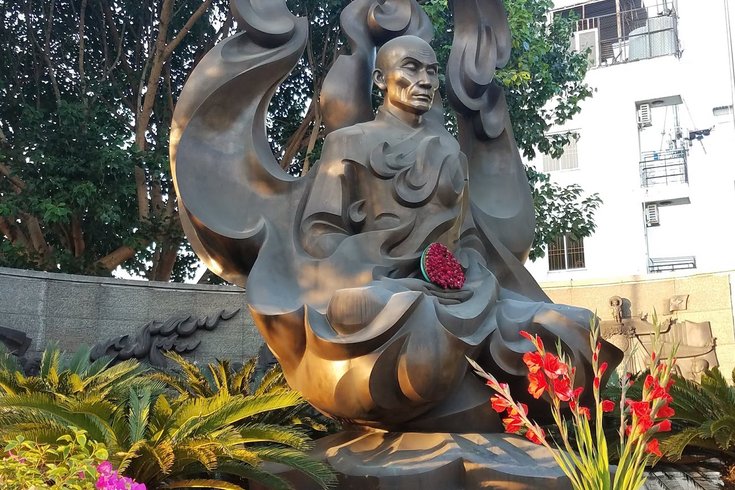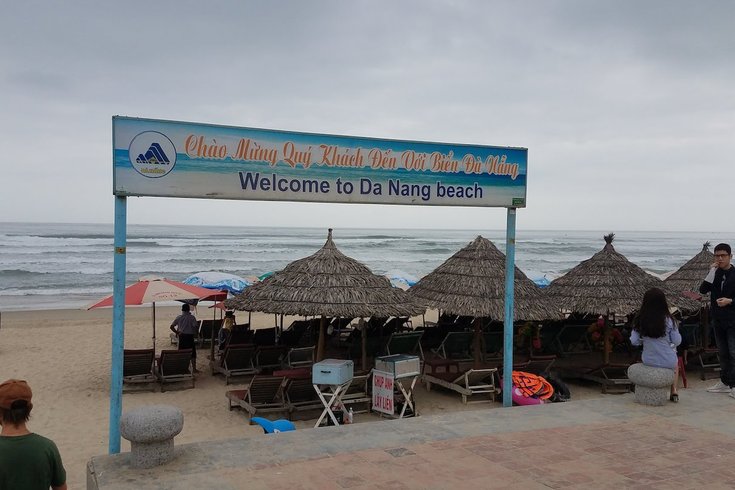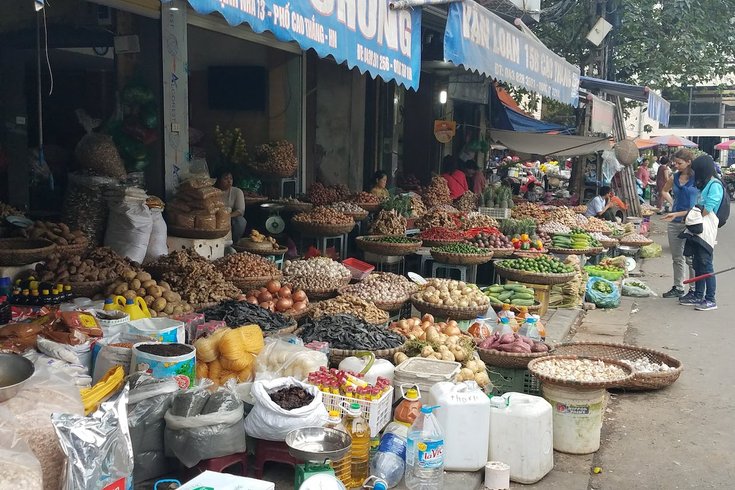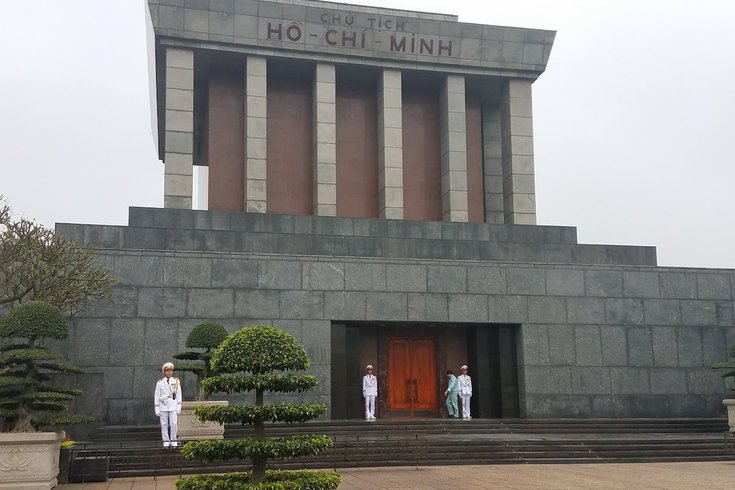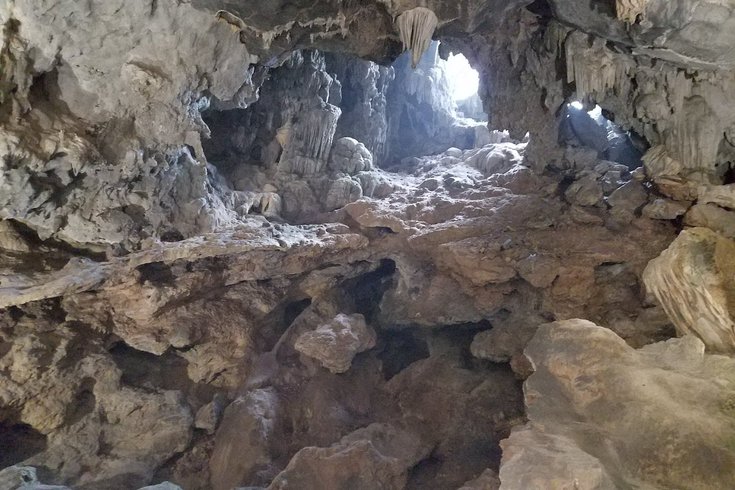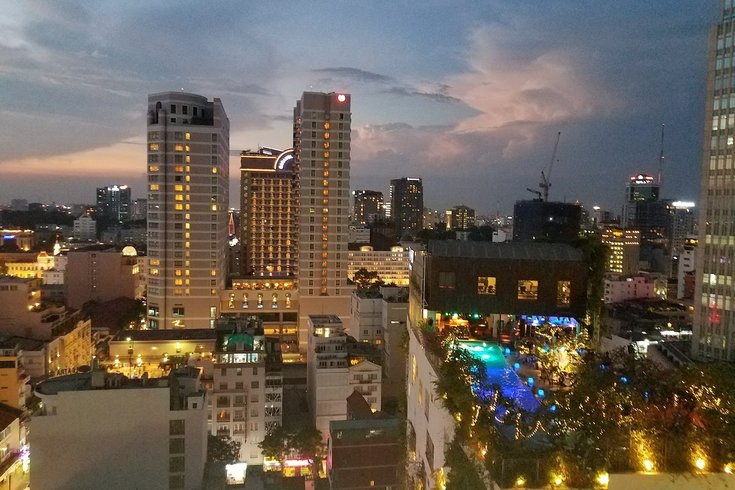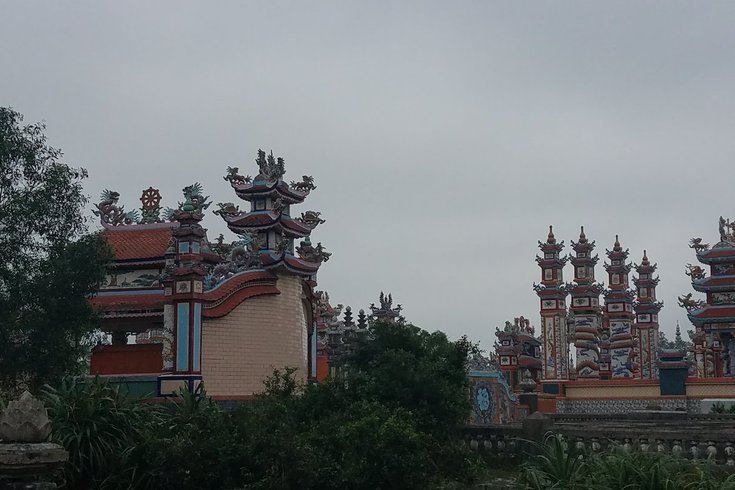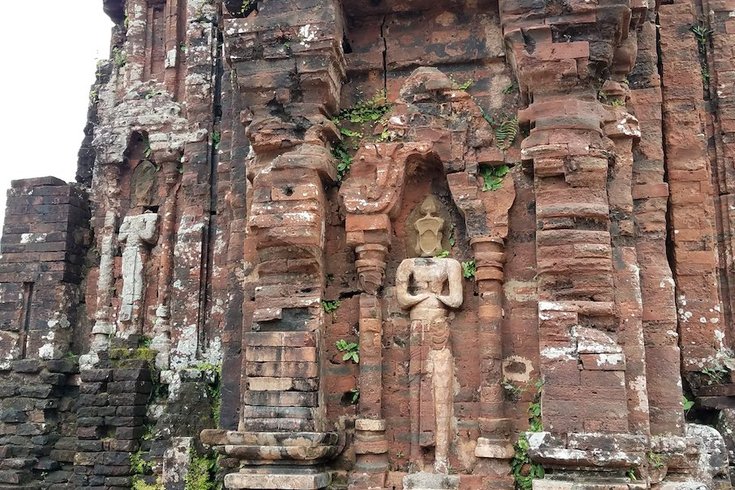Posted in: Lawyers › Senior Lawyers Division
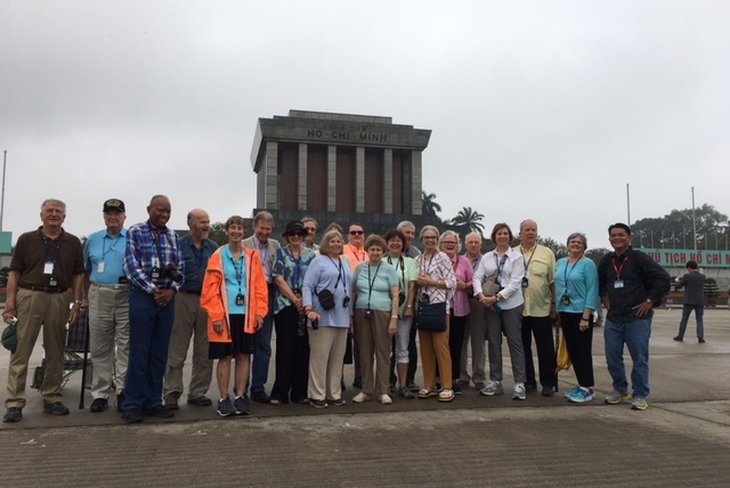
By Nancy Layman
On February 20, 2018, travelers with the Senior Lawyers Division of the South Carolina Bar and their companions flew from New York City to Taiwan (Taipei Airport), where they stopped briefly to change planes, then flew to Ho Chi Minh City (Saigon). What would induce 26 people 60-89 years of age to fly non-stop for 16.5 hours, then fly an additional two hours to reach their destination? For some, it was a return to a place they had been stationed with the U.S. Army or Marines more than 50 years ago, a desire to see what it’s like now, to see how it’s changed. For others, their innate curiosity drove them to a far-away, exotic destination. As we traveled north in Vietnam we flew two more times: once to Hue and later to Hanoi. In between we traveled on air-conditioned buses with our guide “Kong,” who remained with us the entire trip until we left Vietnam. The southern part of the country was hot and humid but it gradually cooled as we neared Hanoi.
First Impressions
The cities are LOUD! Thundering motor bikes, six or seven abreast, line the streets. The motor bikes are the main form of transportation and sometimes include whole families of five or six people. Drivers are likely to load up all sorts of goods on their bikes: cartons of produce, cages of pigs, chickens, pots and pans. Traffic lights are almost non-existent and, when they do exist, they’re likely to be ignored. Crossing these streets is not for the timid. You learn to walk slowly but determinedly across, willing yourself to believe the traffic will go around you—and it does. Often the bikes are ride-sharing vehicles, mainly from Grab and Uber. What would have been a sidewalk is taken up by parked Vespas or small shops displaying their wares: raw fish, beef, pork, goat and many kinds of fruit and vegetables: watermelon, dragon fruit, oranges, bamboo shoots, chayote and Ceylon spinach. Clothing, jewelry, shoes, flowers—it’s all on the sidewalk. Restaurants, bars, teahouses lit up with brilliant neon lights at night also extend onto the sidewalks. Two-story small apartments above the shops house the owners. They board up the shops at night and head upstairs till early next morning. Loud conversations, music, bike horns all contribute to the noise.
The countryside is quiet. Traffic moves efficiently past the fields of rice in the rich Mekong delta, most fields planted and tended backbreakingly by hand. Six million tons of rice are expected to be exported from Vietnam in 2018. Periodically the rice fields are flooded and weeded by barefoot farm workers. Huge fields of soybeans sprout and, in the mountains, large coffee farms prosper (Vietnam is second only to Brazil in the export of coffee). In the middle of most farms sit above-ground monuments to ancestors, large white structures, often of elaborate design. Our guide says the government is trying to encourage the use of multiple-family local cemeteries, but old customs die hard. Trash is strewn along the roads: plastic bottles, bags, food containers—whatever can’t be burned easily. Oxen, pigs, cattle and horses are visible everywhere on the farms. Animal rights activists are now working to protect native black bears, which are frequently captured or bred on small farms. Black bear bile is considered a health aid for treating liver and gall bladder conditions.
A word about the food: the native dish is pho (pronounced “fuh”), a soup containing broth, meat, vegetables and spices—very good. Also popular are dishes such as fried fish, crispy crepes, spring rolls, pancakes and noodles. We tried them all. The beer was good, too.
The Itinerary
In Saigon, a city of over 8.6 million people, we visited Tian Hou Temple. The temples are sites where people traditionally leave gifts to honor their ancestors: fruit, money, flowers and incense. Then we continued to the former Presidential Palace, now Reunification Palace. At an intersection a few blocks from this site is the location where, in 1963, a Buddhist monk died by self-immolation in protest of the persecution of Buddhists by the South Vietnamese government. The Reunification Palace is the building that North Vietnamese tanks seized the morning of April 30, 1975 as Saigon fell. After a walk through the city we checked into the Grand Hotel Saigon. All the hotels in which we stayed were modern, attractive, comfortable and clean; each had an amazing buffet breakfast that appealed to the tastes of the diverse visitors to Vietnam. The following day we departed for Ben Tre province and cruised the Mekong River in a private junk. We had lunch at a local restaurant and ate Ca Tai Tuong Chien Xu (Elephant Ear Fish wrapped in spring roll style)—delicious! Northwest of Saigon are the famous Cu Chi tunnels, constructed by the Viet Cong during both the French and Vietnam Wars. They are a labyrinth, stretching for almost 125 miles underground, and were used during bombing raids and surprise attacks. Claustrophobic visitors and those larger than teenage boys stayed out of the tunnels.
From Saigon we flew to Hue, the Imperial City and former capital of Vietnam during the Nguyen Dynasty, 1802-1945. We began with a cruise along the Perfume River to the Thien Mu Pagoda and to the tombs of former Emperor Minh Mang and Emperor Khai Dinh. Next we visited the Citadel Complex with its temples, pavilions, shops and museums, Hue’s main attraction. A bumpy rickshaw ride through the “Old City” followed. Just outside Hue is a tiny fishing village called the “City of Ghosts,” An Bang, the home of hundreds of beautifully decorated tombs. The belief is that having a meticulously cared for and decorated tomb will bring the family good fortune. In Da Nang, our next stop, we visited “Nam O” Beach where the first U.S. combat troops, two battalions of Marines, landed 53 years ago. Da Nang Air Base, where U.S. Army and Air Force troops were stationed, was of strategic importance during the Vietnam War.
About 27 miles inland from Hoi An are the My Son ruins. Here the tower-temples were the seat of the Champa Kingdom between the fourth and 13th centuries. My Son was the most important intellectual and religious center of the kingdom. In nearby Hoi An, once a major port, we visited a 400-year-old Japanese covered bridge and the Phuoc Kien Temple, dedicated to Thien Hau, the goddess of the sea who protected sailors.
Our second internal flight was to Hanoi, from which we traveled by bus to Ha Long Bay in northeast Vietnam on the gulf of Tonkin. Ha Long is famous for its scenic ocean karst topography with over 2,000 islands and islets of various sizes. The islands are dotted with wind- and wave-eroded grottoes, many of them with theatrical lighting. A short cruise from shore and we entered the grottoes with their unusual and eerie formations of stalactites and stalagmites. On the way back to Hanoi we stopped at Yen Duc village and enjoyed a water puppet show presented by local village artists.
Our final full day was spent in Hanoi. We began with a visit to Ho Chi Minh’s mausoleum as well as to the private residence where he lived from 1954–1969. The wooden ethnic minority-style house, built on stilts, is surrounded by gardens. Ho’s vintage cars are also preserved there. We continued the visit with the Temple of Literature, Vietnam’s first university, constructed in 1070. Finally, we visited the Hoa Lo Prison, or as the American POW’s knew it, the “Hanoi Hilton.” Originally built by the French, the prison has been largely destroyed to make room for shops and houses. The remaining part contained what some visitors called “The Propaganda Room” since it showed photos of American pilots imprisoned there as having a jolly time and decorating a Christmas tree.
Overall, it was a good trip. The Vietnamese people are kind, generous and striving to make a good life for their families. Tourism is a big asset. Huge construction projects are under way along the coast. Hotels and casinos built by the Chinese are springing up. The economy is growing rapidly and, for now, visiting Vietnam is a bargain. But you sense that the whole country is changing quickly and visitors who don’t travel there soon will see a different kind of place.
On the way home we again flew to Taipei Airport and from there to JFK in New York, a slightly shorter trip on the return. Due to airline schedules that precluded traveling on to the airport in Charlotte that day, we spent our last evening at an airport hotel at JFK. Without planning to meet again, the travelers began to appear at the hotel bar and restaurant in the evening. We swapped stories and toasted one last time: to our trip, to our travelers and to more travel experiences together.

